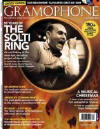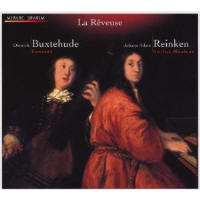Texte paru dans: / Appeared in: |
|
|
Appréciation d'ensemble / Overall evaluation : "This
is a unique composer coupling, however, so well worth getting to know".
|
|
|
Reviewer: Lindsay Kemp A unique composer coupling that makes perfect sense, and includes some rarities It makes good sense to put trio sonatas by these two major figures of the north German midBaroque together on one disc: pictured playing together (Reincken on harpsichord, Buxtehude on viola da gamba) in a much-reproduced painting by Johannes Voorhout, they were great friends who may well have studied together under the same Hamburg organist, Heinrich Scheidemann. (As Gilles Cantagrel maintains in an excellent booklet essay, there is no evidence for the long-held idea that Reincken was born in 1623 and thus lived to the age of 99; he seems more likely to have been a close contemporary of Buxtehude, born around 1637.) Of the two, it is Reincken whose music is the rarer on disc; his one published collection of sonatas, Hortus musicus (1687), has been recorded incomplete by the Purcell Quartet (Chandos, 9/01) and touched on by Musica Antigua Köln (Archiv, 10/81 — nla). Here we get two of them, soundly constructed suite-like works whose sober minor-key caste is affecting and attractive. It is hard to see why they are not performed more often. The three Buxtehude sonatas are sunnier as well as more free-ranging in form, with fuller-textured sections contrasting with rhetorical solos for the various string instruments in turn. These works, too, are relatively uncommon on record; interest has tended to fall on the published sonatas for violin, gamba and continuo. La Reveuse give rich and sonorous readings, finding room in the continuo compound for harpsichord, organ, theorbo and harp, and benefiting from the church acoustic in which they are recorded. They are warmer but less detailed than the Purcell Quartet, and more laidback than the brilliant, nervily intense Musica Antigua. This is a unique composer coupling, however, so well worth getting to know.
|
|
|
|
|
|
Cliquez l'un ou l'autre
bouton pour découvrir bien d'autres critiques de CD |
|




